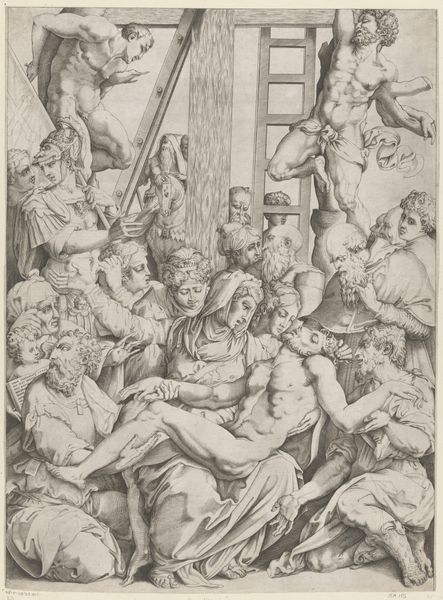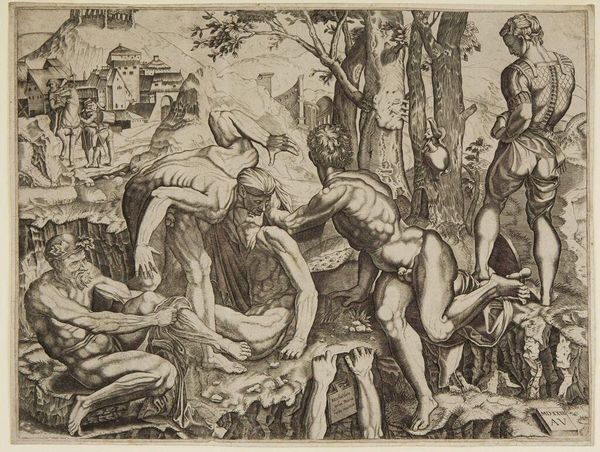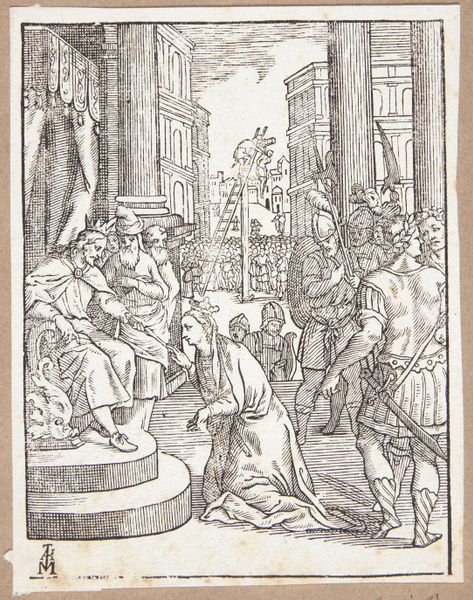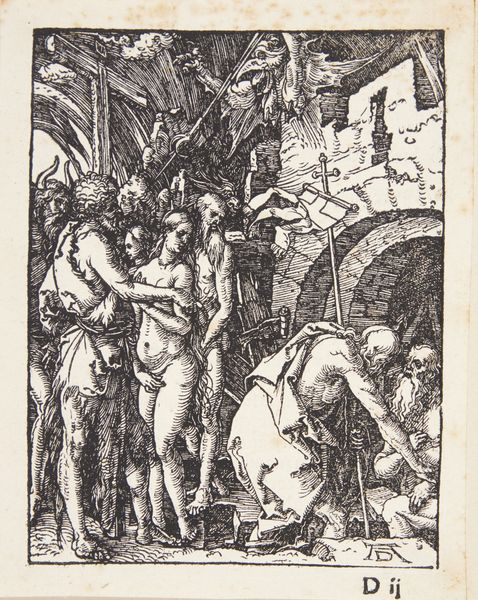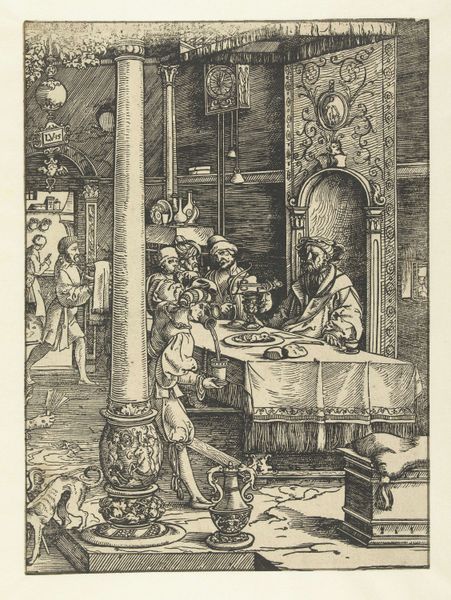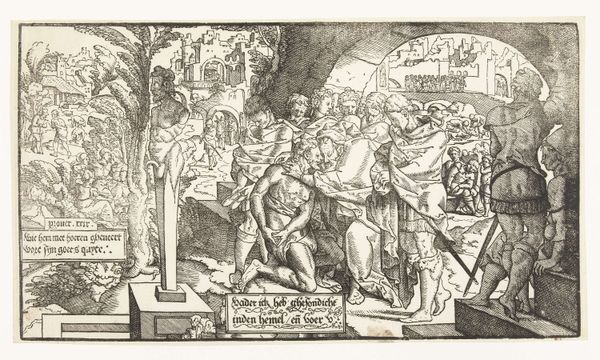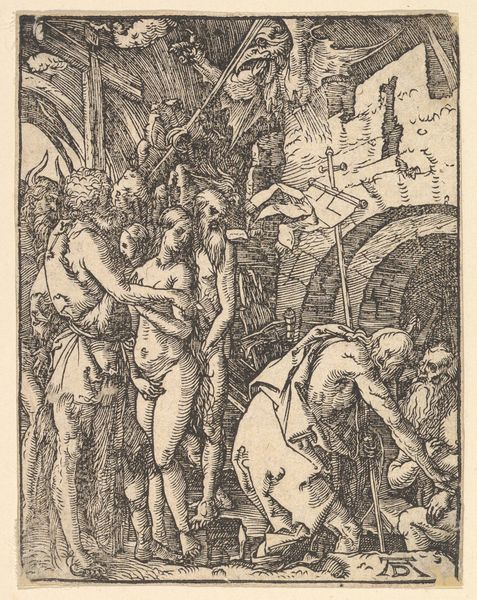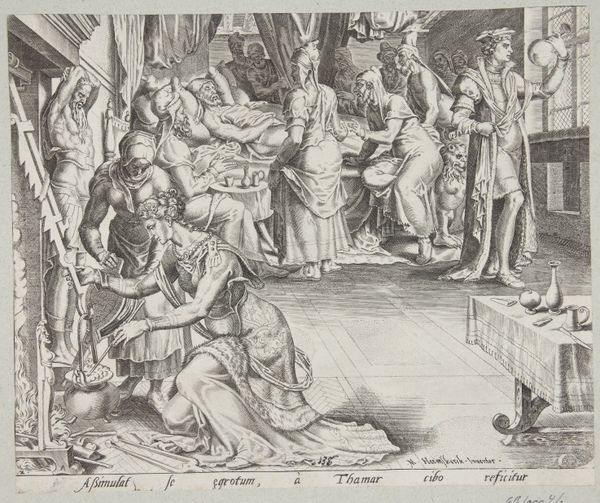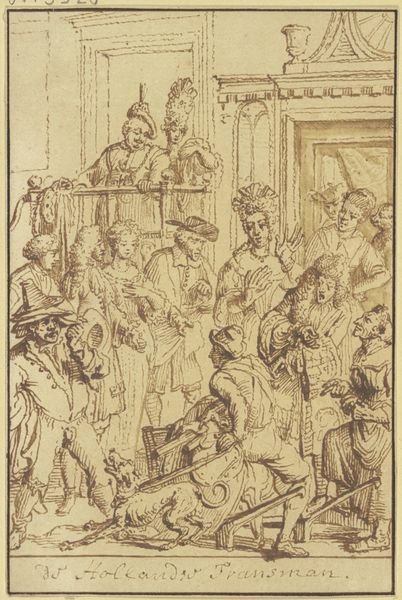
drawing, print, etching, ink, engraving
#
portrait
#
drawing
#
ink drawing
#
medieval
#
pen drawing
# print
#
etching
#
figuration
#
ink
#
genre-painting
#
history-painting
#
northern-renaissance
#
engraving
Dimensions: sheet: 15 1/4 x 11 in. (38.7 x 27.9 cm)
Copyright: Public Domain
Editor: So, here we have Albrecht Dürer’s "The Men's Bath," made somewhere between 1485 and 1528. It's an engraving. The detail is incredible! It kind of reminds me of a very busy, Renaissance version of a locker room. What stands out to you when you look at it? Curator: Oh, isn't it just marvelous? Dürer always gets under my skin, in the best way possible. I mean, look at this seemingly mundane moment. But it’s not, is it? Think about it, the act of communal bathing was, for Dürer and his contemporaries, so much more than hygiene. It's a social stage, a place of encounter, almost ritualistic in a sense. What do you think Dürer is really trying to show us about 16th-century life? Editor: A social stage, that's a great way to put it! I guess I was just thinking about it visually. It's like he's showcasing the male nude, almost in a celebration of the body, but not in the idealized way we see in Italian Renaissance art. These guys are… real. Curator: Exactly! It’s a raw portrayal, right? Less interested in classical ideals and more fascinated by the variety, the imperfections, of the human form. You see those tiny details – the folds of skin, the different expressions, those little narrative vignettes playing out. Think about the humanist movement then too and the study of mankind which began during the period and was important for Durer, do you not think this also may be Durer studying humanity? Editor: Definitely! It’s like he’s using this bathing scene as an excuse to just observe and document people, their interactions. It's fascinating how he captured such ordinary humanity, yet elevated it through the art of engraving. I appreciate that it allows us to feel more present in 16th-century life. Curator: That's it exactly! Dürer isn't just showing us *men bathing*, he's holding a mirror to his world, allowing us a peep into the values and vibes of his time, captured with his meticulous touch and wry observation. What do we not see in the space but imagine what occurs off the page in our own imaginings? What new stories and ideas did it offer for you? Editor: I now see the artwork with newfound historical context that's a peek into history. Thanks!
Comments
No comments
Be the first to comment and join the conversation on the ultimate creative platform.

